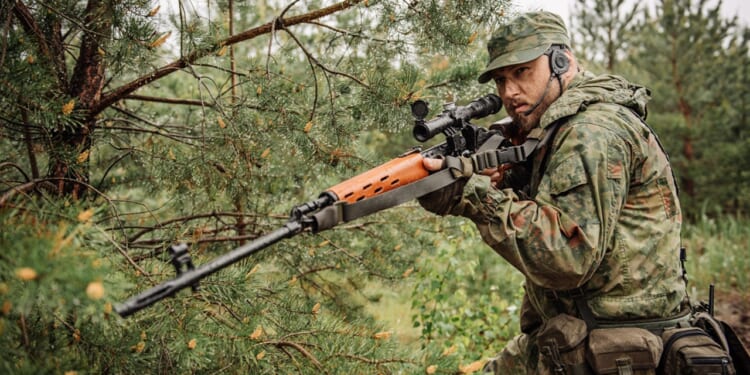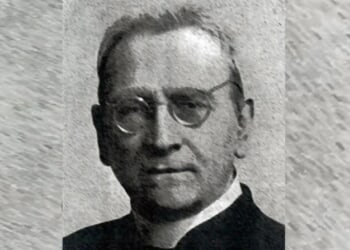Much like the AK-47, another legendary rifle from the Soviet era, the SVD designated marksman rifle has been noted for being easy to use, maintain, and repair.
The Russian state-owned Kalashnikov Group, the nation’s largest producer of military small arms, announced that modernized SVD Dragunov sniper rifles would soon reach frontline troops in the ongoing war in Ukraine. The modernized “SVDS” rifle—currently employed by special operators in the Airborne Forces, marine infantry, and other elite personnel—is a compact version of the base model SVD.
“The Kalashnikov Group has boosted the production of 7.62mm Dragunov sniper rifles with a folding buttstock (SVDS rifles) at the request of defense customers by 13 times compared to 2024. In particular, SVDS rifles enjoy increased demand in the zone of the special military operation,” the press office of the Kalashnikov Concern said in a statement to Russian news agency TASS.
Although the SVDS has a barrel that is around two inches shorter in length—565 mm (22.2 in) to 620 mm (24.4 in)—compared to the SVD, it is still noted for its accuracy, capable of engaging enemy targets at a range of up to 1,000 meters.
“The advantages of the 7.62mm Dragunov sniper rifle with a folding buttstock have been confirmed by three decades of its successful operation. The semi-automatic action, the compact design, the light weight, high precision and accuracy of fire are the indisputable advantages of the SVDS. It effectively helps our troops accomplish combat objectives in the special military operation area,” said Kalashnikov Group Director General, board member of the Union of Russian Machine-Building Enterprises, Alan Lushnikov.
About Russia’s Dragunov Sniper Rifle
Designed by Yevgeny Dragunov in the 1950s, the SVD is a gas-operated, semi-automatic rifle that was introduced to engage different types of targets within a range of 1,200 meters. It is technically not a “sniper rifle,” at least not in the Western sense, despite what the Kalashnikov Concern press offices may have suggested. Although its full designation is “Snaiperskaya Vintovka Dragunova,” which literally translates to “Dragunov Sniper Rifle,” it was introduced in the Soviet Army as a designated marksman rifle (DMR)—a subtle but essential distinction.
The SVD rifle was introduced to provide infantry squads with a semi-automatic, magazine-fed rifle outfitted with a scope that would be accurate at far greater distances than the standard infantry rifle. It is important to note that at the time, the Soviet Army was issuing AK-47 assault rifles to the infantry. That weapon, which was also chambered for an intermediate cartridge, lacked the range and stopping power of the bolt-action rifles used by the Red Army in World War II.
The SVD, designed by Russian gunsmith Yevgeny Fyodorovich Dragunov, was primarily carried by a designated marksman within a squad. In contrast, dedicated snipers continued to rely on more powerful and accurate bolt-action rifles.
Much like the AK-47, the SVD has been noted for being easy to use, maintain, and repair. The semi-automatic designated marksman rifle has been employed throughout the world not only by trained marksmen but by insurgents and militants around the globe, and with minimal training can give an advantage to those paramilitary forces.
The SDVS is one of several variants introduced, and as noted, it features a folding stock that allows it to be carried by paratroopers and by marine infantry personnel.
While special operator marksmen will likely be armed with the SVDS, designated snipers are more likely to receive the SV-98 (Snaiperskaya Vintovka Model 1998) bolt-action sniper rifles. As previously reported, a new batch of those rifles has reportedly been delivered to the forces on the frontlines in Ukraine as well.
About the Author: Peter Suciu
Peter Suciu has contributed over 3,200 published pieces to more than four dozen magazines and websites over a 30-year career in journalism. He regularly writes about military hardware, firearms history, cybersecurity, politics, and international affairs. Peter is also a contributing writer for Forbes and Clearance Jobs. He is based in Michigan. You can follow him on Twitter: @PeterSuciu. You can email the author: [email protected].
Image: Shutterstock / PRESSLAB.
















